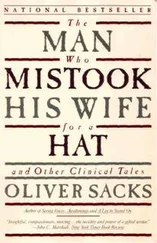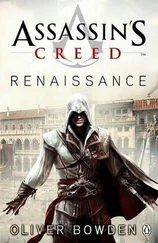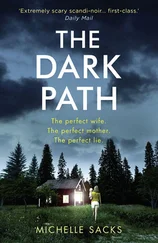On July 26, she saw green dots, like little balls, floating to the left, and these turned into “elongated silvery leaves.” When her niece remarked that an early autumn was on the way in Canada and the leaves were already changing color, the hallucinated silvery leaves immediately turned reddish brown. These ushered in a day full of complex visual hallucinations, including “daffodils in bouquets” and “fields of goldenrod.” They were followed by a very particular image, which was multiplied. When her niece visited that day, Aunt Dot said, “I’m seeing sailor boys … one on top of the other, like a film strip.” They were colored, but flat and motionless and small, “like stickers.” She did not recognize their origin until her niece reminded her that she (the niece) often used a sailor-boy sticker when she sent her aunt a letter — so here, the sailor boy was not a complete invention, but a reproduction of the stickers Aunt Dot had once seen, now multiplied.
The sailor boys were replaced by “fields of mushrooms” and then by a golden Star of David. A neurologist in the hospital had been wearing such a star prominently when he visited her, and she continued to “see” this for hours, though not multiplied like the sailor boys. The Star of David was superseded by “traffic lights, red and green, turning on and off,” then by scores of tiny golden Christmas bells. The Christmas bells were replaced by a hallucination of praying hands. Then she saw “gulls, sand, waves, a beach scene,” with the gulls flapping their wings. (Up to this point, apparently, there had not been movement within an image; she had seen only static images passing in front of her.) The flying gulls were replaced by “a Greek runner wearing a toga … he looked like an Olympic athlete.” His legs were moving, as the gulls’ wings had been. The next day she saw stacked and serried coat hangers — this was the last of her complex hallucinations. The day after that, she saw only lightning streaks to the left, as she had seen six days before. And this was the end of what she called her “visual odyssey.”
Aunt Dot was not a nurse, like her great-niece, but she had worked for many years as a volunteer in the nursing home. She knew that she had had a small stroke on one side in the visual part of her brain. She realized that the hallucinations were caused by this and were probably transient; she did not fear that she was losing her mind. She did not for a moment think that her hallucinations were “real,” although she observed that they were quite unlike her normal visual imagery — much more detailed, more brightly colored, and, for the most part, independent of her thoughts or feelings. She was curious and intrigued, and so she made a careful note of the hallucinations as they occurred and tried to draw them. Both she and her niece wondered why particular images popped up in her hallucinations, to what extent they reflected her life experiences, and how much they might have been prompted by her immediate environment.
She was struck by the sequence of her hallucinations — that they had gone from simple and unformed to more complex, and then back to simple before disappearing. “It’s like they moved up the brain, then down again,” she said. She was struck by how things she had seen could change into similar forms: octagons turning into snowflakes, blobs into leaves, and perhaps gulls into Olympic athletes. She observed that, in two instances, she had hallucinated something she had seen shortly before: the neurologist’s Star of David and the sailor-boy stickers. She noted a tendency to “multiplication” — bunches of daffodils, fields of flowers, octagons galore, snowflakes, leaves, gulls, scores of Christmas bells, and multiple copies of the sailor-boy stickers. She wondered whether the fact that she was a deeply religious Catholic who prayed several times a day had played a part in her seeing a hallucination of praying hands. She was struck by the way in which the silvery leaves she was seeing instantly turned reddish brown when her niece said, “The leaves are changing.” She thought the Olympic runner might have been provoked by the fact that the 2008 Olympic Games were coming up, with constant previews on television. I found it impressive and moving that this old lady, curious and intelligent, though not intellectual, would observe her own hallucinations so calmly and thoughtfully and, without being prompted, raise virtually all the questions a neurologist might ask about them.
If one loses half the visual field from a stroke or other injury, one may or may not be aware of the loss. Monroe Cole, a neurologist, became aware of his own field loss only by doing a neurological exam on himself after his coronary bypass surgery. He was so surprised by his lack of awareness of this deficit that he published a paper about it. “Even intelligent patients,” he wrote, “often are surprised when a hemianopia is demonstrated, despite the fact that it has been demonstrated on numerous examinations.”
The day after his surgery, Cole began to have hallucinations, in the blind half of his visual field, of people (most of whom he recognized), dogs, and horses. These apparitions did not frighten him; they “moved, danced and swirled, but their purpose was unclear.” Often he hallucinated “a pony with his head cradled in my right arm”; he recognized this as his granddaughter’s pony, but as with many of his hallucinations, “the colour was wrong.” He always realized that these visions were unreal.
In a 1976 paper, the neurologist James Lance provided rich descriptions of thirteen hemianopic patients, and he emphasized that their hallucinations were always recognized as such, if only by their absurdity or irrelevance: giraffes and hippopotamuses sitting on one side of a pillow, visions of spacemen or Roman soldiers to one side, and so on. Other physicians have made similar reports; none of their patients ever confuses such hallucinations with reality.
I was therefore surprised and intrigued to receive the following letter from a physician in England, about his eighty-six-year-old father, Gordon H., who had long-standing glaucoma and macular degeneration. He had never had hallucinations before, but recently he had had a small stroke affecting his right occipital lobe. He was “quite sane and largely intellectually undiminished,” his son wrote, but
he has not recovered vision and retains a left hemianopia. He has, however, little awareness of his visual loss as his brain appears to fill in the missing parts. Interestingly, though, his visual hallucinations / filling in always seem to be context-sensitive or consistent . In other words, if he is walking in a rural setting, he can be aware of bushes and trees or distant buildings in his left visual field, which when he turns to engage his right side, he discovers are not really there. The hallucinations do, however, seem to be filled in seamlessly with his ordinary vision. If he is at his kitchen bench, he “sees” the entire bench, even to the extent of perceiving a certain bowl or plate within the left side of his vision — but which on turning disappear, because they were never really there. Yet he definitely sees a whole bench, with no clear separation between parts composed of hallucination and true perception.
Gordon H.’s normal visual perception to the right side, one might think, by its normalcy and detail, would immediately show up the relative poverty of the mental construct, the hallucination, on the left. But, his son asserts, he cannot tell one from the other — there is no sense of a boundary; the two halves seem continuous. Mr. H.’s case is unique, to my knowledge. 52 52 In a letter to me, James Lance commented, “I have never encountered hallucination embracing information from the surroundings like Mr. H.’s.”
He has none of the outlandish, obviously out-of-context hallucinations commonly reported in hemianopia. His hallucinations blend perfectly well with his environment and seem to “complete” his missing perception.
Читать дальше












